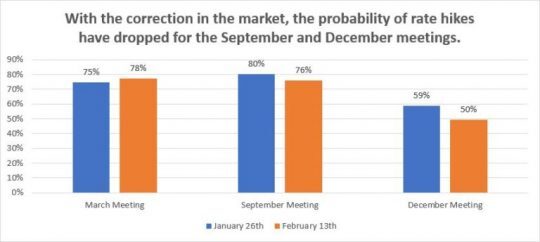Meet the New Fed Chairman
Jerome Powell is the new Chair of the Federal Reserve replacing Janet Yellen. We expect him to continue the dovish policies of Janet Yellen. A dovish policy refers to a looser, more accommodating policy with the goal of stimulating the economy. Powell has been one of the seven members of the Federal Reserve Board of Governors since 2012. He was on the board for the entirety of Janet Yellen’s term from 2014 to 2018.
One of the major monetary tools of the Federal Reserve is to set the benchmark lending rate, also referred to as the federal funds rate. The benchmark lending rate is the interest rate depository institutions charge each other for overnight loans of funds. The current benchmark lending rate is in a target range of 1.25 percent to 1.5 percent. Currently, the futures market is forecasting approximately two .25 percent interest rate hikes for 2018. Since the peak of the market on January 26th the odds of a September and December hike have dropped. The market is expecting rates to rise at the March meeting with odds of a hike at 78%.

On February 13th, Powell released his first public statement since replacing Yellen. His comments echoed previous comments from Yellen and gave the market the impression that he will continue the gradual process of normalizing interest rates. Here are some of the more important comments he said:
- “The global economy is recovering strongly for the first time in a decade. We are in the process of gradually normalizing both interest rate policy and our balance sheet with a view to extending the recovery and sustaining the pursuit of our objectives.”
- “Monetary policy has continued to support a full recovery in labor markets and a return to our inflation target; we have made great progress in moving much closer to those statutory objectives.”
- “We will remain alert to any developing risks to financial stability.”
In September of 2017 Powell voted in favor of beginning the multi-year process of winding down the central bank’s $4.5 trillion portfolio. This vote with Yellen and previous comments have convinced the markets that he plans to continue the dovish policies of Yellen. The belief in Powell’s dovish stance explains why the chance of a September and December rate hike have dropped with the recent stock market correction. Some market participants view this as an extension of the Greenspan put. The Greenspan put, named after former chair Alan Greenspan, is the belief that the Federal Reserve will always step in to protect the markets by cutting rates and purchasing bonds to help money flow in to the stock market.
In a June 2013 speech Powell said, “some volatility is unavoidable, and indeed is a necessary part of the process by which markets and the economy adjust to incoming information.” In the same speech he said “[i]f the performance of the economy is weaker, the Committee may delay before moderating purchases or even increase them. If the economy strengthens faster than the Committee anticipates, the pace of purchases may be moderated somewhat more quickly. The path of purchases is in no way predetermined; we will monitor economic data and adjust our purchases as appropriate.” These comments could just have easily been said by Janet Yellen. For most market participants these comments have been considered dovish and create the possibility of a Powell put for the market. With a Powell put the market expects a slowdown or a complete stop in the pace of rate hikes if the stock market has a large correction.
Investing involves risk, including the possible loss of principal and fluctuation of value. Past performance is no guarantee of future results.
This letter is not intended to be relied upon as forecast, research or investment advice, and is not a recommendation, offer or solicitation to buy or sell any securities or to adopt any investment strategy. The opinions expressed are as of the date noted and may change as subsequent conditions vary. The information and opinions contained in this letter are derived from proprietary and nonproprietary sources deemed by Virtue Asset Management to be reliable. The letter may contain “forward-looking” information that is not purely historical in nature. Such information may include, among other things, projection and forecasts. There is no guarantee that any forecast made will materialize. All information is illustrated gross of investment advisory fees. Reliance upon the information in this letter is at the sole discretion of the reader. Please consult with a Virtue Asset Management financial advisor to ensure that any contemplated transaction in any securities or investment strategy mentioned in this letter align with your overall investment goals, objectives and tolerance for risk. Additional information about Virtue Asset Management is available in its current disclosure documents, Form ADV and Form ADV Part 2A Brochure, which are accessible online via the SEC’s investment Adviser Public Disclosure (IAPD) database at www.adviserinfo.sec.gov, using CRD#283438.
Virtue Asset Management is neither an attorney nor an accountant, and no portion of this content should be interpreted as legal, accounting or tax advice.
